How making a newspaper helped an indie record shop find its voice
The first issue of Deluxe was, in Rupert Morrison’s words, “lumpy.” He’s the owner of Drift, an award-winning record shop in Totnes – not...
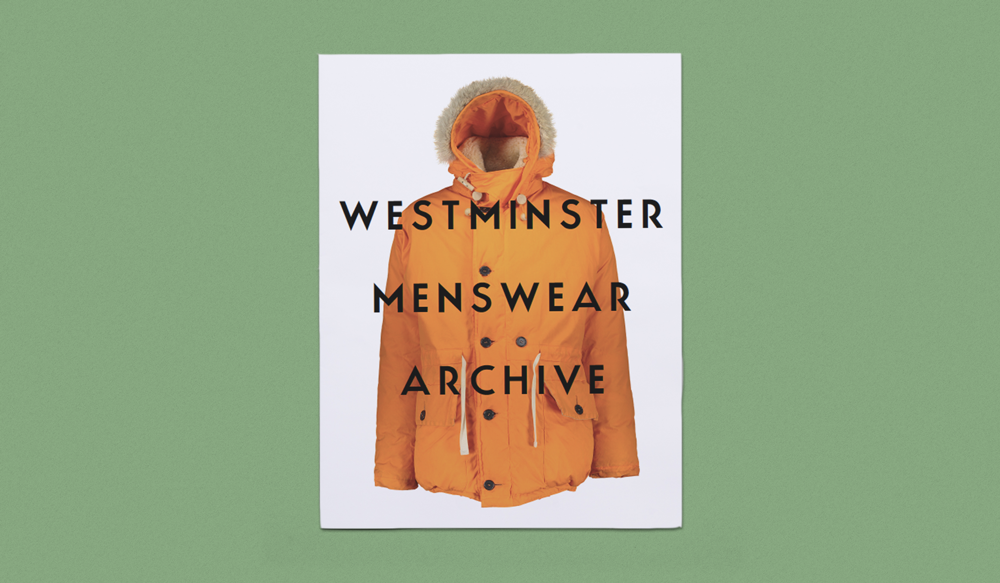
Sometime in 1986, the writer Mark C. O'Flaherty bought a double-breasted coat by British designer John Flett at a sale on South Molton Street. Made from a mix of cashmere, wool and nylon, it has cream plastic buttons and "a cigarette burn which [O'Flaherty] remembers happening on a night out at London’s Wag Club."
Today the coat is one of over 1,600 garments in the Westminster Menswear Archive (WMA), a pioneering collection that traces the history of menswear from 1900 to the present day.
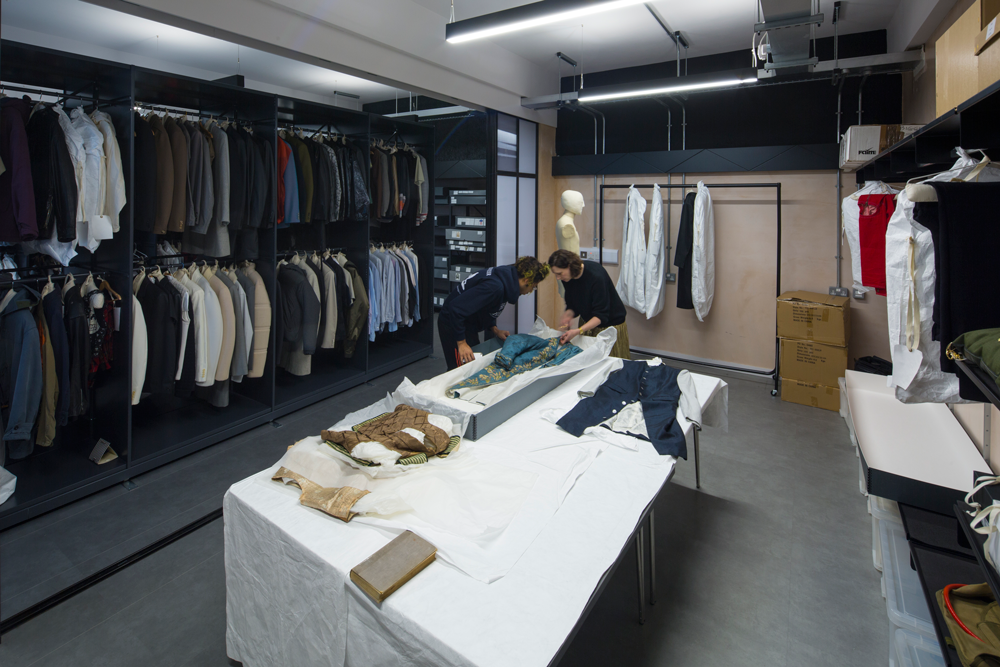
Founded in 2016, the WMA is the first archive open to the public that's dedicated only to menswear. It's housed on the University of Westminster campus at Harrow, in northwest London. There, organised in immaculate racks, are rare pieces by the most important names from the last century of menswear, including Comme des Garçons, Helmut Lang, Martin Margiela and Alexander McQueen. (The WMA already has a bigger collection of McQueen's menswear than the V&A.)
But it’s not all runway fashion—there are also hundreds of examples of military uniforms and workwear, like a padded police jacket designed to protect the wearer from Taser shots during training.
The WMA recently used our digital tabloids to introduce the collection to a new audience in a way that feels "graphic and modern." The newspaper features colourful, full-page photographs, so readers can get a sense of the detail that goes into making the different types of garments in the collection.
We asked professor Andrew Groves, director of the WMA and Course Director for BA Fashion Design at the University of Westminster, to tell us more about the archive and how they're using the newspaper. Below he also shares 5 highlights from the fast-growing collection.
Its primary purpose is as a teaching collection that is used by students, researchers and industry to support their design practice and to create new knowledge around menswear, its history, materiality, and social meaning. Industry users include Burberry, Versace, Rapha, Charles Jeffery, Versace, Matthew Miller, Liam Hodges, Alexander McQueen, Rapha, and Hunter.
The archive is open to the public by appointment.
Visitors just need to email our curator, Dr. Danielle Sprecher, at d.sprecher@westminster.ac.uk to make an appointment to visit.

We have one full time curator and several student interns that work within the archive.
It features predominantly garments — most were designed and made in the UK or have influenced the development of British menswear and style. We also have a small collection of accessories, show and brand look books.
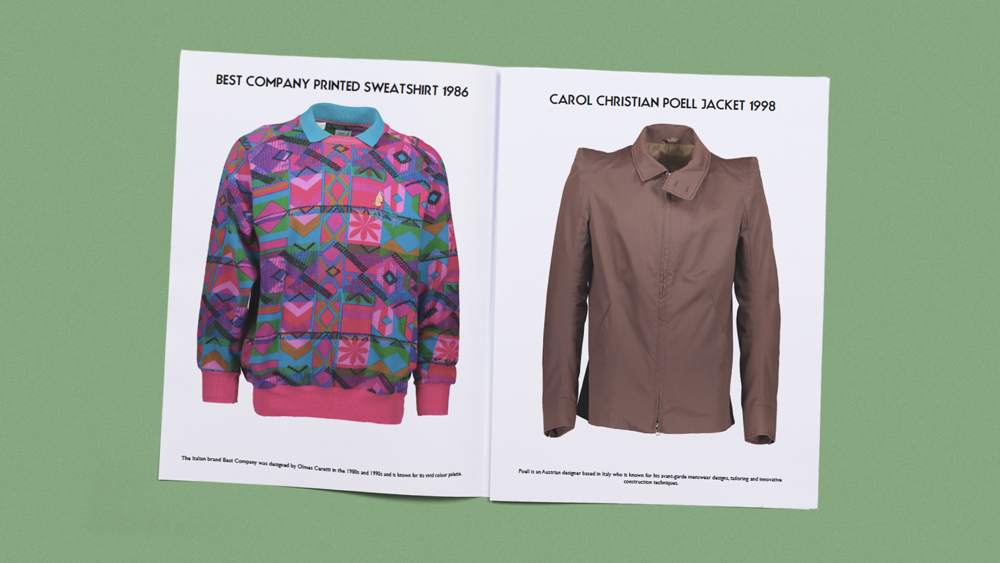
We acquire objects through several means including donations from individuals as well as fashion companies, from fashion auctions, and from eBay.
Since we've only been around for three years, it was essential for us to engage with external audiences in a graphic and modern format. We wanted to open the collection up in a way that was accessible and easy to engage with, and that showed the breadth and depth of the collection.
Once we had the newspaper printed, we sent them out to fashion courses both in the UK and abroad, and to design studios to encourage them to visit. The result has seen a substantial increase in visitors from both education and industry.
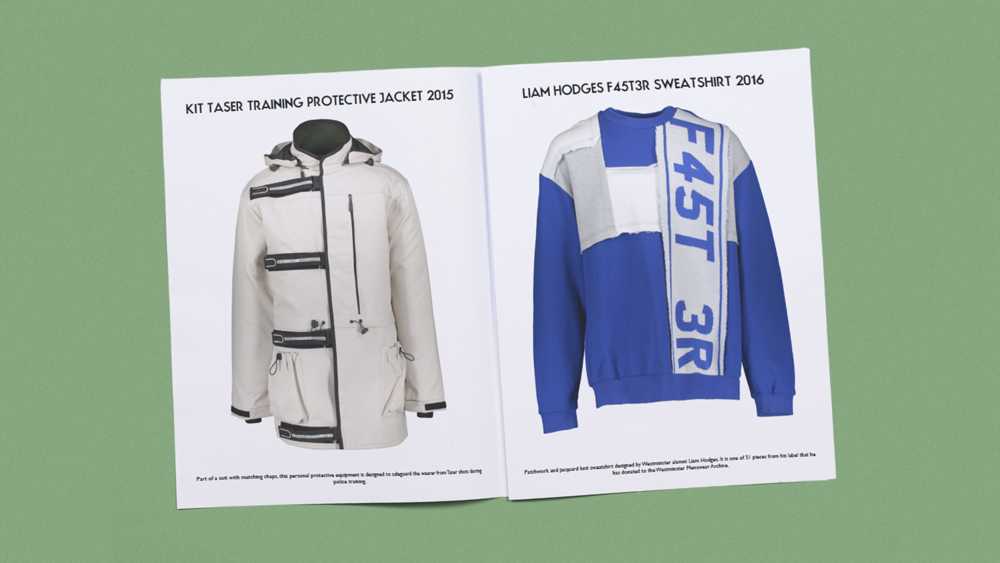
In October 2019, our first major exhibition from the Westminster Menswear Archive opens to the public at P3, which is a 14,000 sq. ft venue in Marylebone. The exhibition is called Invisible Men: An Anthology from the Westminster Menswear Archive and will be the largest exhibition devoted to menswear to have been shown in the UK.
It covers the last 120 years of predominately British menswear through the display of over 170 garments, drawn exclusively from the Westminster Menswear Archive, and includes examples of uniforms, workwear, and designer ensembles.
The exhibition explores the intrinsic design language of menswear, which reiterates archetypal garments intended for specific functional, technical or military use. It illustrates how designers have disrupted these conventions through minimal, yet significant modifications to produce outcomes that both replicate and subvert their source material.
Through this approach, the language of menswear has developed an almost fetishistic appreciation of the working man in all his heroic iterations, referencing the clothing of seafarers, soldiers, athletes, firefighters, road workers, explorers, and scientists.
This design strategy has, for the most part, allowed men and what they wear to avoid scrutiny: these garments have remained invisible within fashion exhibitions in favour of presenting menswear as the story of the dandy or the peacock male.
This exhibition aims to shine a light on these invisible men.
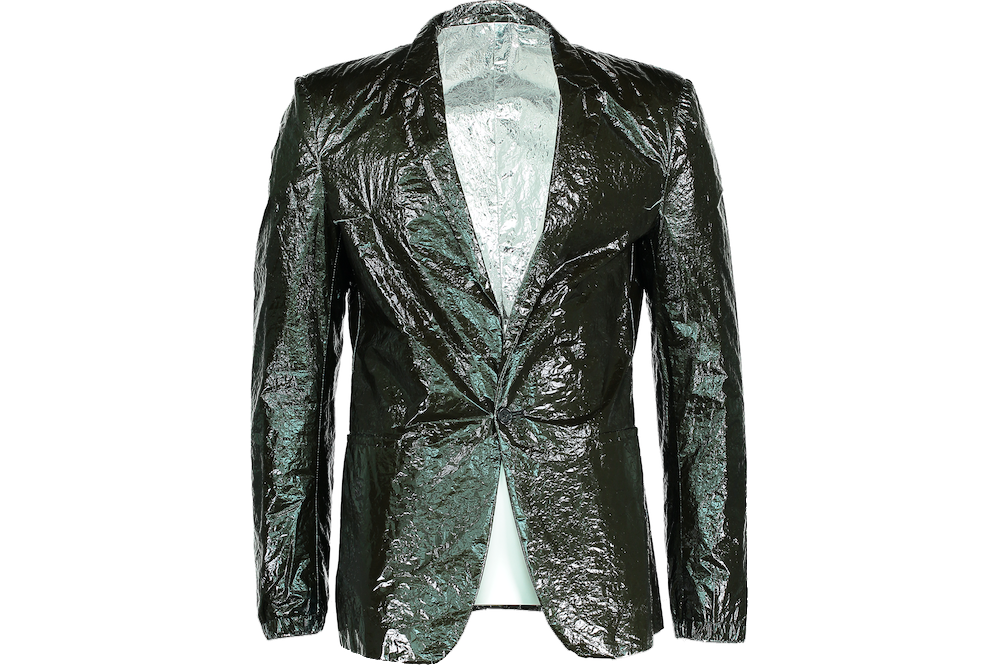
Calvin Klein Collection, 2010
The material for this tailored jacket is Mylar, an industrial polyester resin material created by DuPont and manufactured in America, which was sent to Italy where it was overprinted to attain the black outer finish. It has been further treated to enable it to be sewn into the jacket.
It is one of a collection of 69 pieces from the PVH Archives, New York, that were donated to the Westminster Menswear Archive in 2017. (PVH is the parent company of Calvin Klein, Tommy Hilfiger, and other fashion brands.)
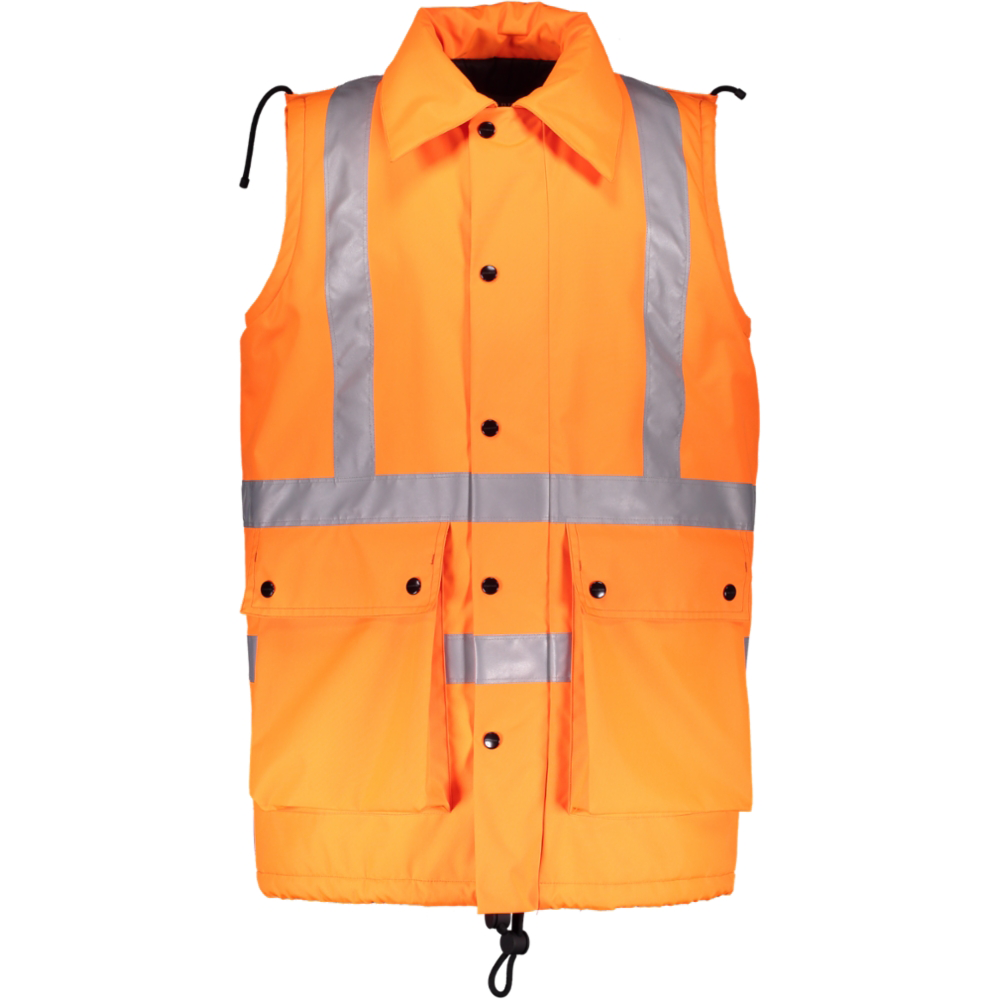
Burberry, 2018
Shown as part of Christopher Bailey’s final runway collection for Burberry, this garment is strikingly similar to a railwayman’s hi-viz jacket. But on closer inspection small details, such as the Burberry embossed poppers and the jacquard signature lining, have been changed to subvert a workers' garment into a high fashion outcome.
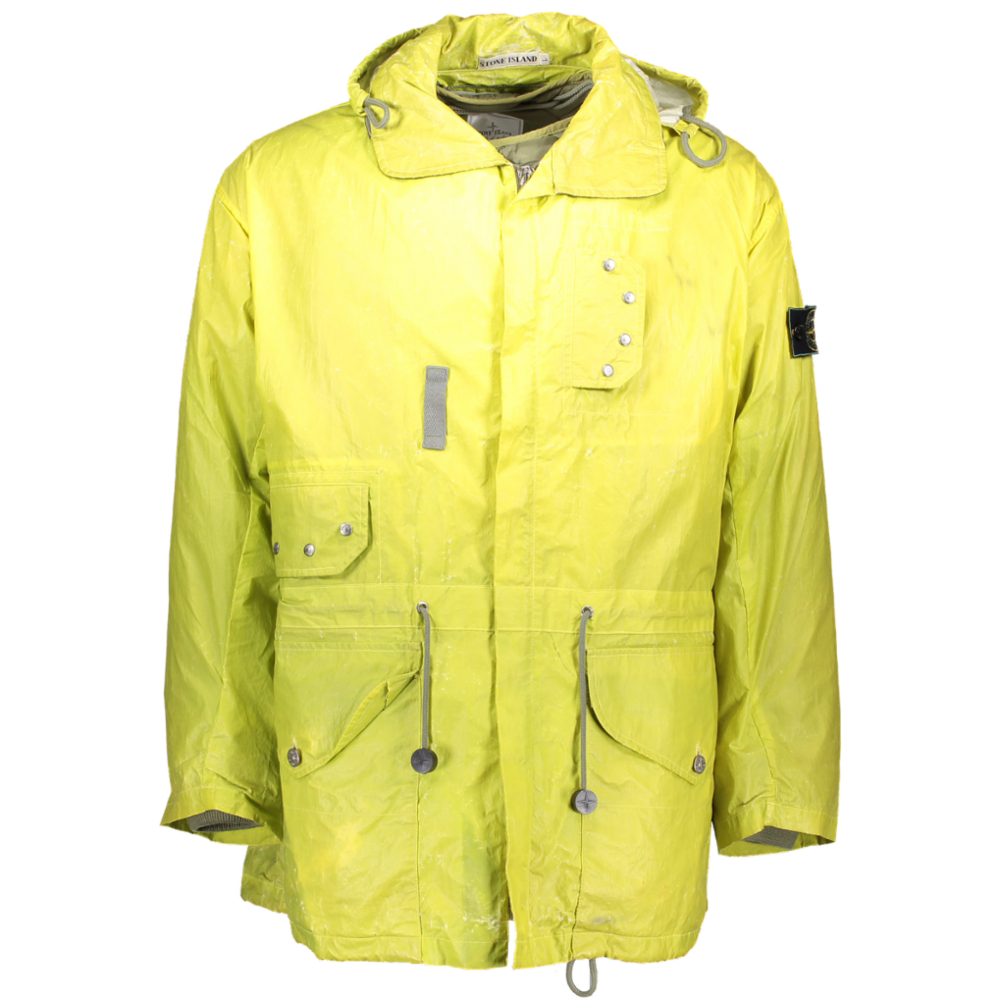
Stone Island, 1988
Known for their technical menswear, this snow suit by Stone Island changes colour from yellow to green when in a cold environment due to a revolutionary fabric called Sway, developed by the Japanese company Toray Industries. It is a nylon coated with resin containing thermosensitive microcapsules, which gives the garment a thermosensitive response to changes in temperature.
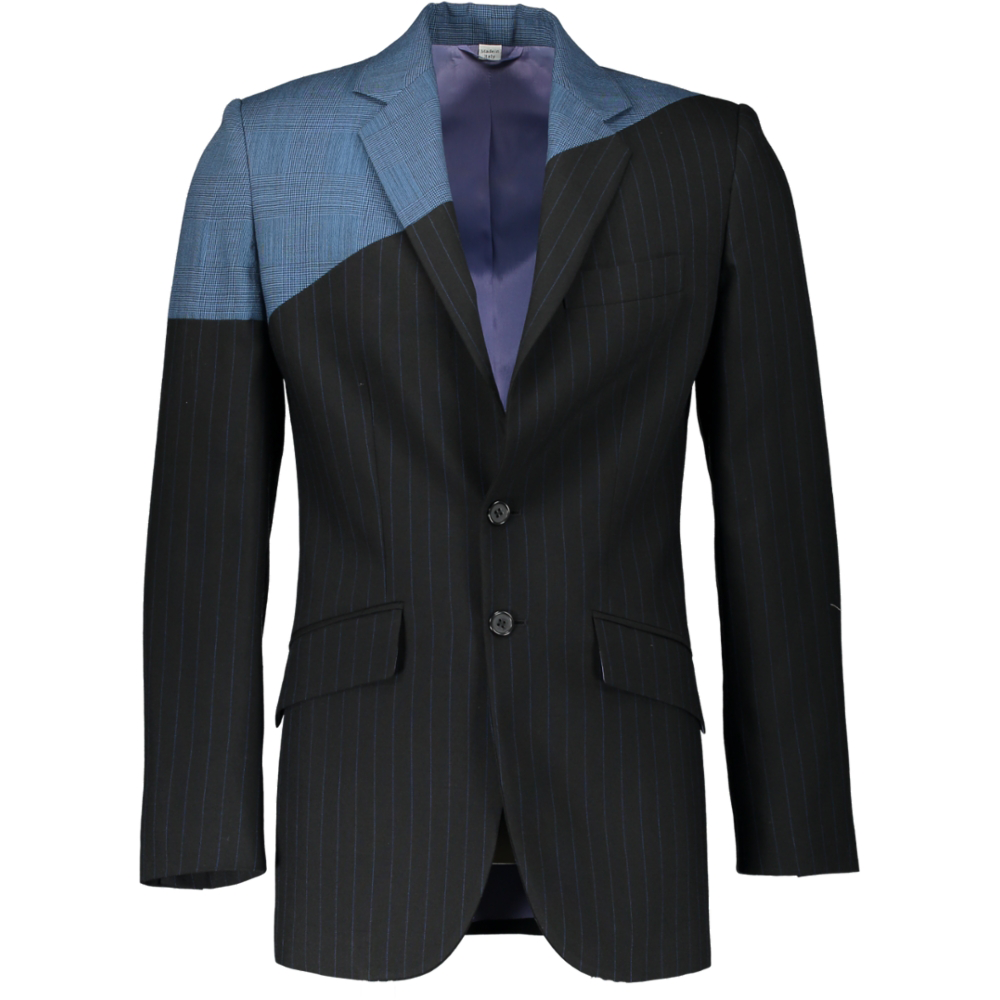
Alexander McQueen 1998
Part of McQueen’s S/S98 Golden Shower, or Untitled collection, which saw both menswear and womenswear featuring traditional tailoring that was dissected and spliced to incorporate contrasting panels of other suiting fabrics such as chalk stripe, plaid, or houndstooth. This early piece is one of 80 menswear designs by Alexander McQueen in the Westminster Menswear Archive.
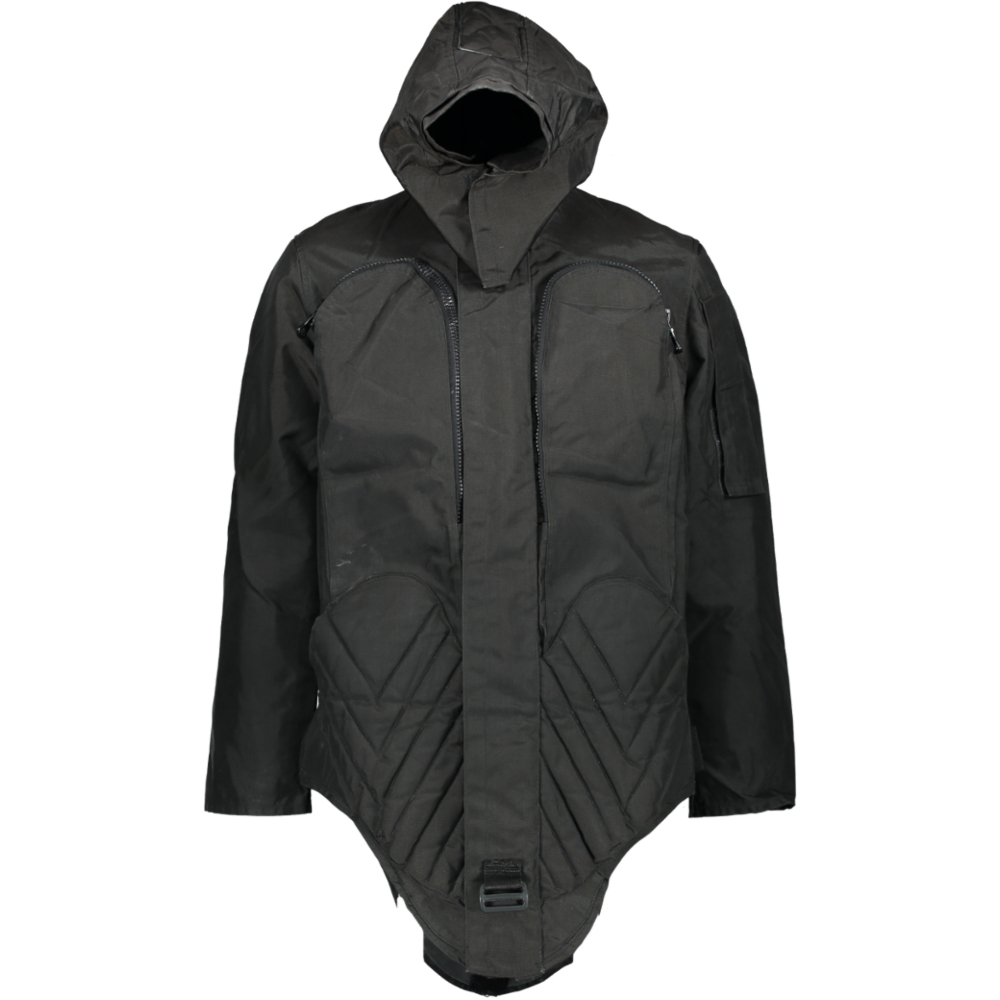
Vexed Generation, 1996
Concerned about the increasing emergence of CCTV surveillance, limiting civil liberties and the changing urban environment, Adam Thorpe and Joe Hunter set up Vexed Generation in 1994, designing clothes that resisted an increasingly hostile and alienating public environment.
This parka is made from Nylon 66, a high tenacity fibre which is knife retardant. The parka is coated with neoprene which is fire retardant and has strategic padding through the pelvis, groin, kidneys and spine for additional protection.
Print your own newspaper with Newspaper Club.
The first issue of Deluxe was, in Rupert Morrison’s words, “lumpy.” He’s the owner of Drift, an award-winning record shop in Totnes – not...
Spring is in the air and a new season of print is upon us! In this roundup, we've got a creative pick-me-up from Papier, a peek behind...
As Newspaper Club’s digital product manager, Billy Whitehouse spends his days helping others bring their print ideas to life. But...